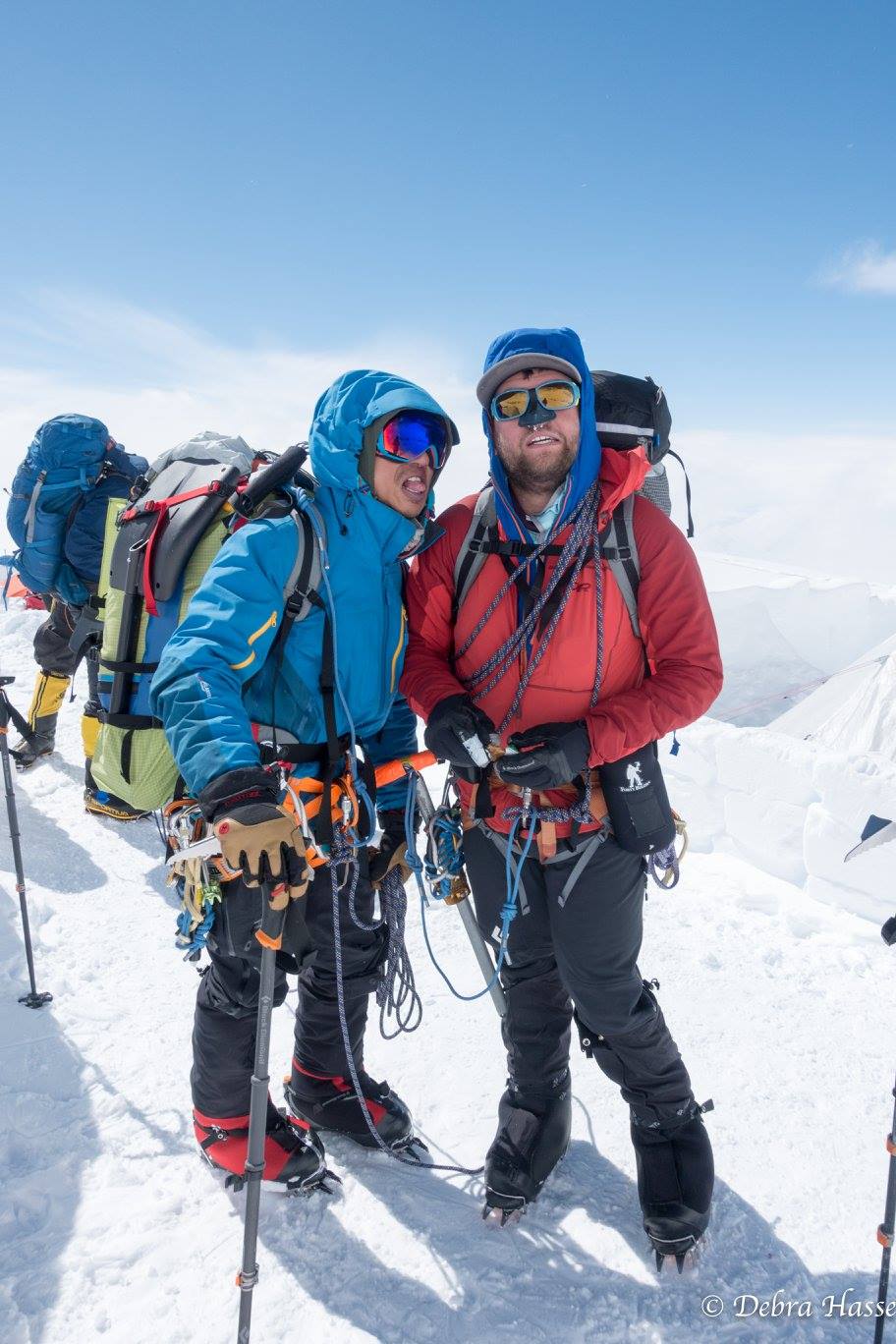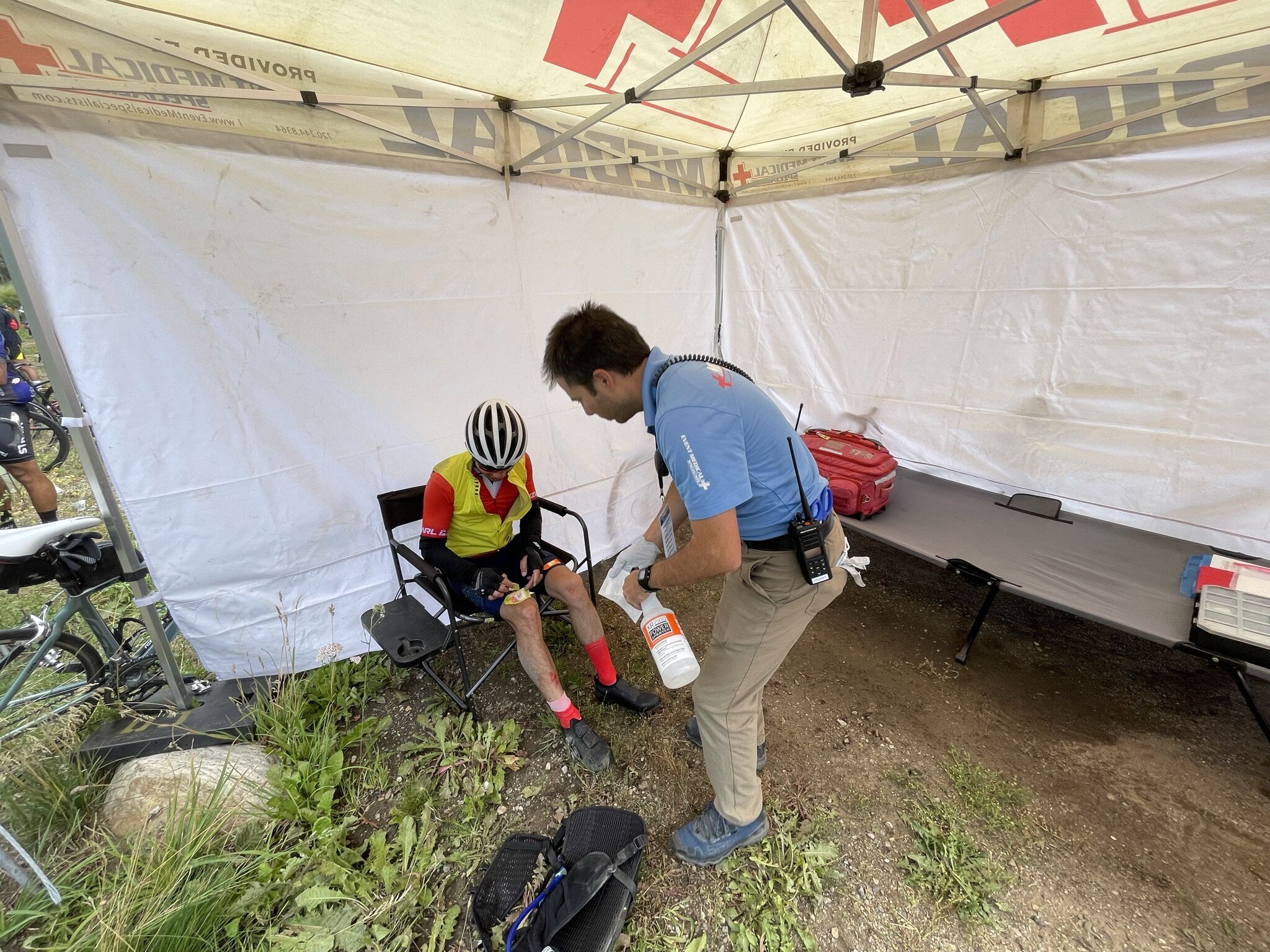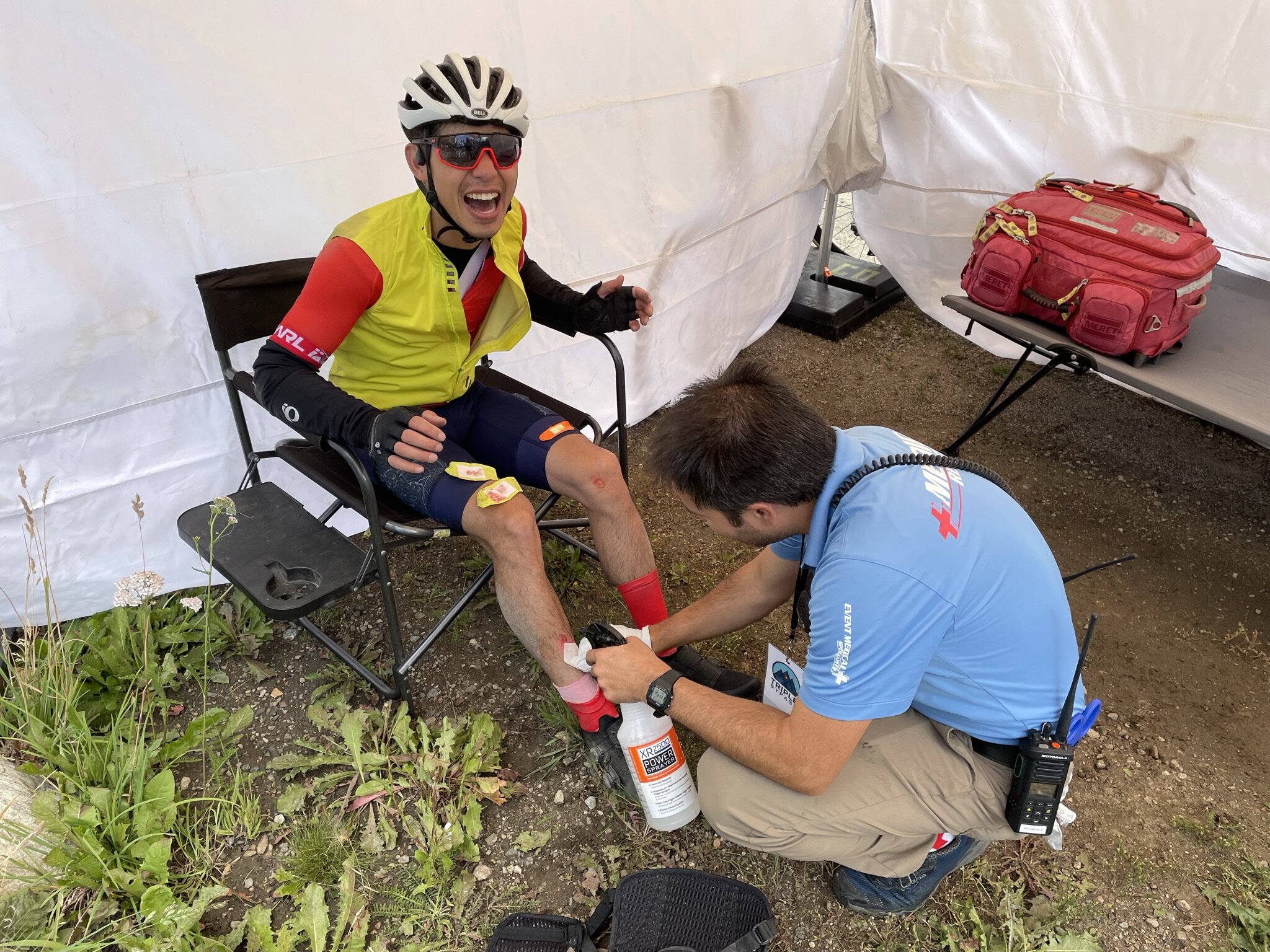Team Evergreen's Triple Bypass 08/21/2021
After months of training, the time had finally come for the ride day. The hype around the Triple Bypass is surreal, but also mostly warranted. As their website explains under FAQS, temperatures can range from 30-100(+) F, weather is unpredictable ranging from desert like sun to snow and hail, and the course is not only over an imperial century (100+ miles) but has over 10,000’ of climbing with the high point at nearly 12,000’ altitude. For any recreational and/or enthusiast cyclist and/or endurance athlete, the Triple Bypass is a must do, if not for the challenge, definitely for the views and experience.
My training for this ride wasn’t exactly structured, but I knew I needed lots of miles and lots of climbing on the bike to prepare myself for the saddle time and nutrition intake strategy given the length of the event as well as my T2DM as mentioned in my previous post. I aimed to build base fitness cycling approximately 4 to 6 times a week with at least 1 long ride ranging from 35 to 62 miles with 3000-7000’ of climbing which I had done through events such as Elephant Rock 100k and loops around my greater neighborhood. As July came around (~6 weeks prior to this ride), I switched to more specificity which focuses on endurance pacing, time in the saddle (more than 5hrs), and long climbs. I had set an achievable goal of ramping up the long rides with weekend goals of 40 miles + 4k’, 60 miles + 6k’, 70 miles + 7k’, and lastly 85 miles and 8.5k’ ending 2 weeks prior to the ride date. The smoke from the West/PNW fires made outside ride time challenging with AQI’s consistently over 150, so my I had to do the first 2 long rides on Zwift (the Pretzel and uber Pretzel for those that know). I can’t say I recommend suffering on a trainer for more than 3hrs at a time, but that was a journey in itself that I could write a small post on (6hrs on the trainer), big kudos for those who put in more hours in the virtual than on the roads.
Week 1 Virtual Ride, Long but not too long and virtual due to bad AQI
Week 2 Mount Evans HC as written about in the last post
Week 3 Long Ride with climbing with Greg
Week 4 Long Ride + Long Saddle Time + Endurance Pace
I think I had hoped I could also ride the Copper Triangle by Roll Massif but I missed the registration window. That being said, I had a ton of fun touring Golden Gate Canyon. All this training, I felt pretty confident about completing this beast of a ride that is the Triple Bypass. Fast forward past taper week, I’ve got friends coming in from all around the country to ride this thing and the forecast is looking splendid for Ride day with clear air and perfect temperatures (40-65F) partly cloudy.
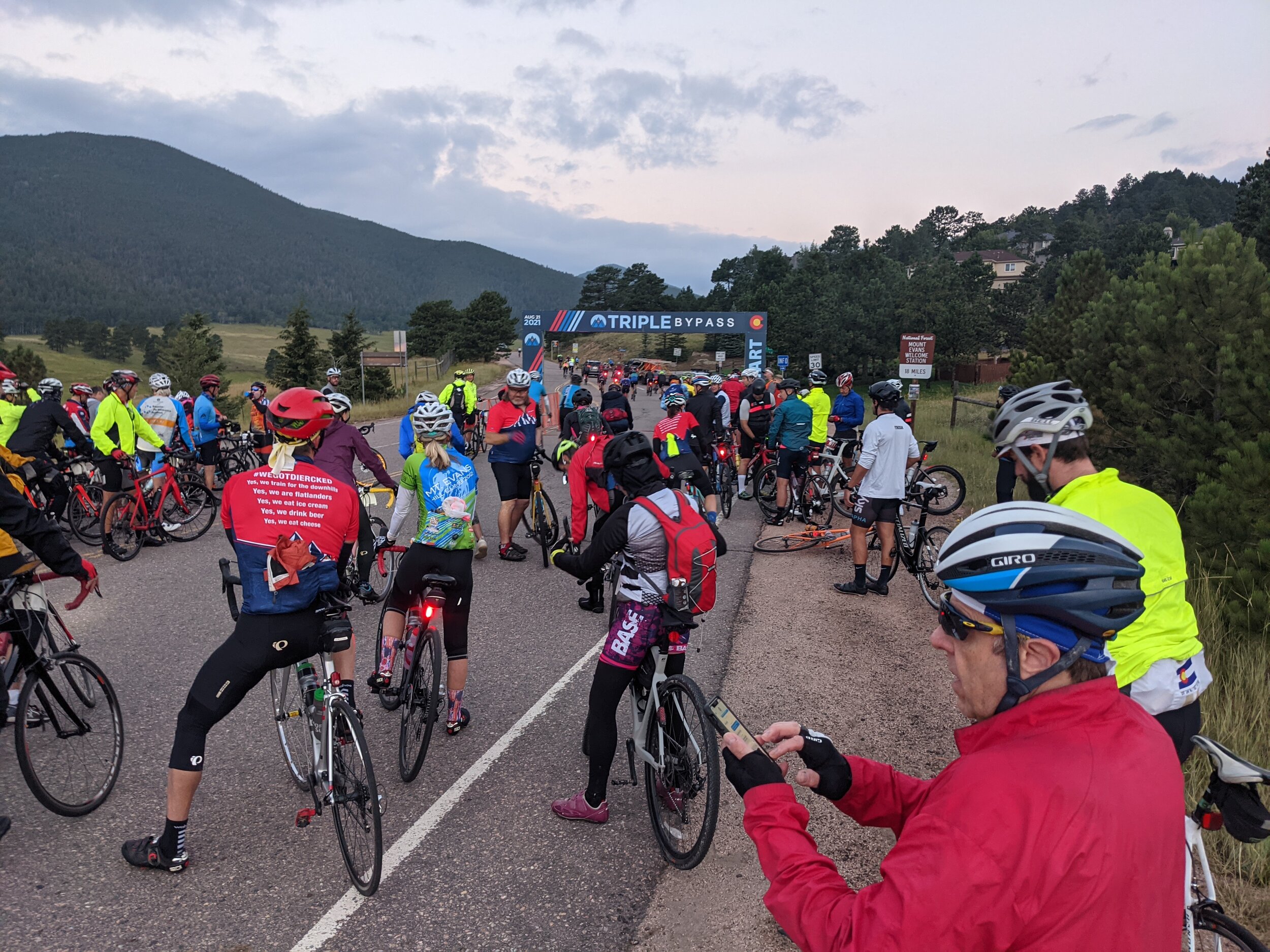
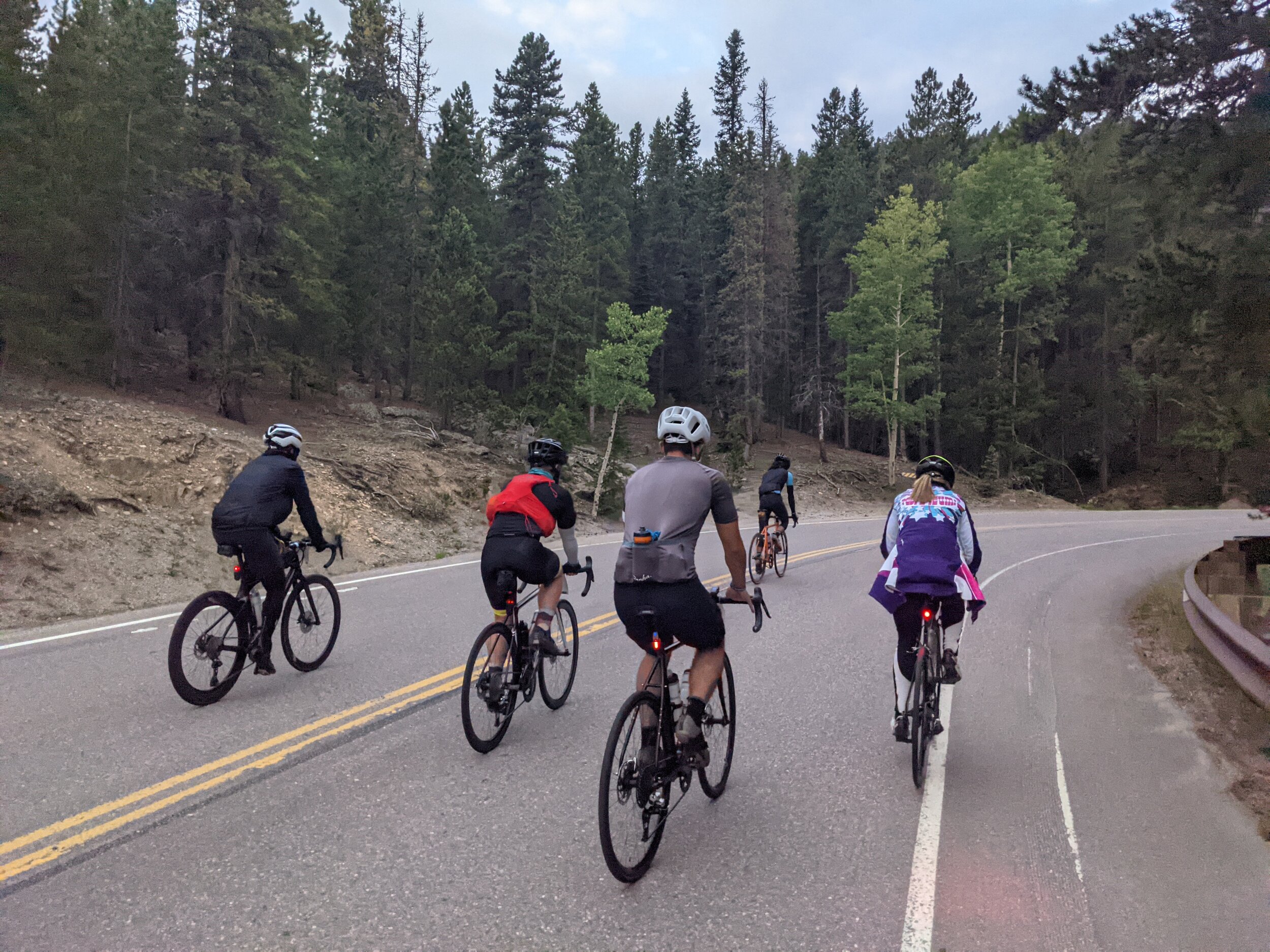

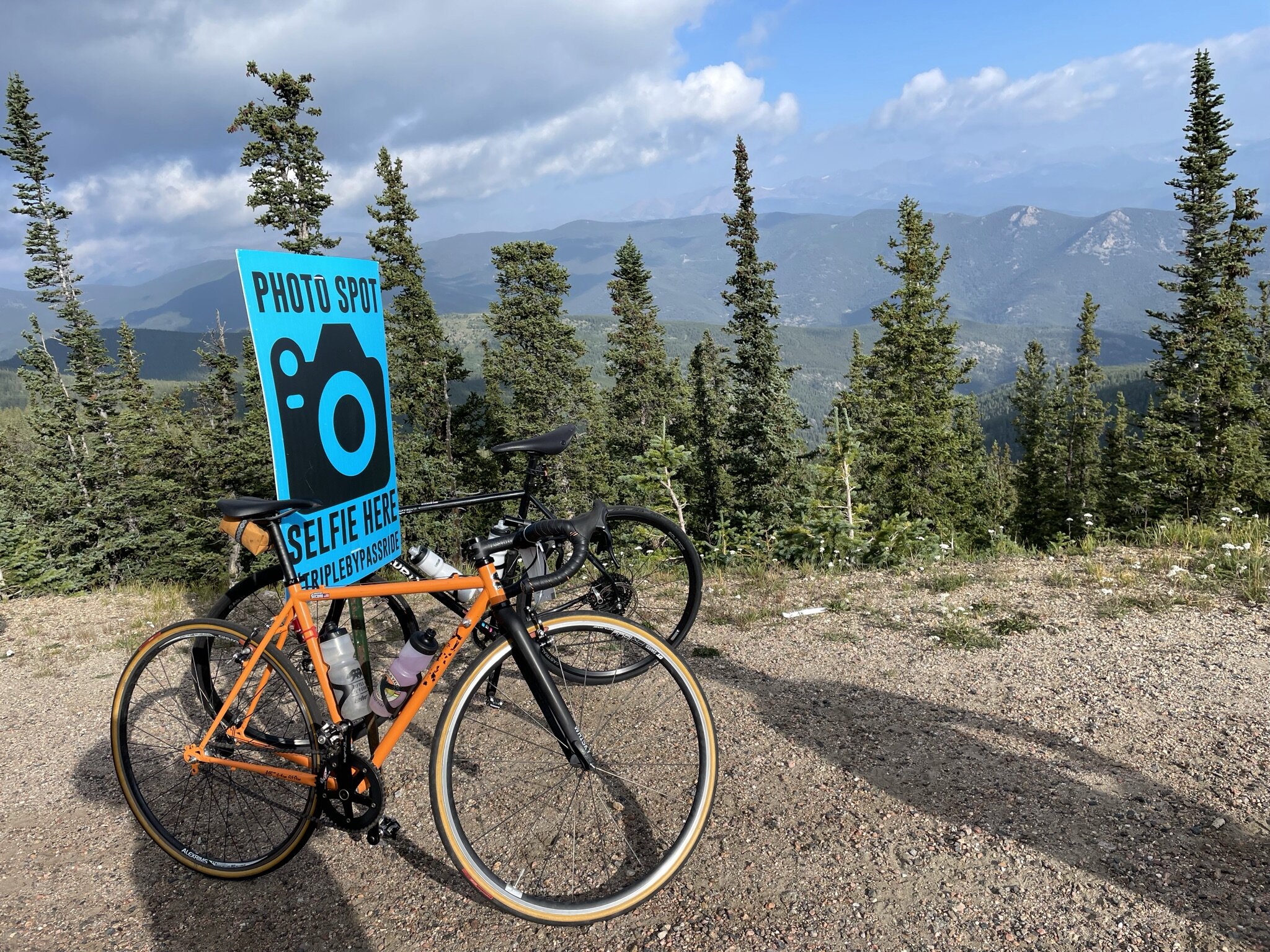
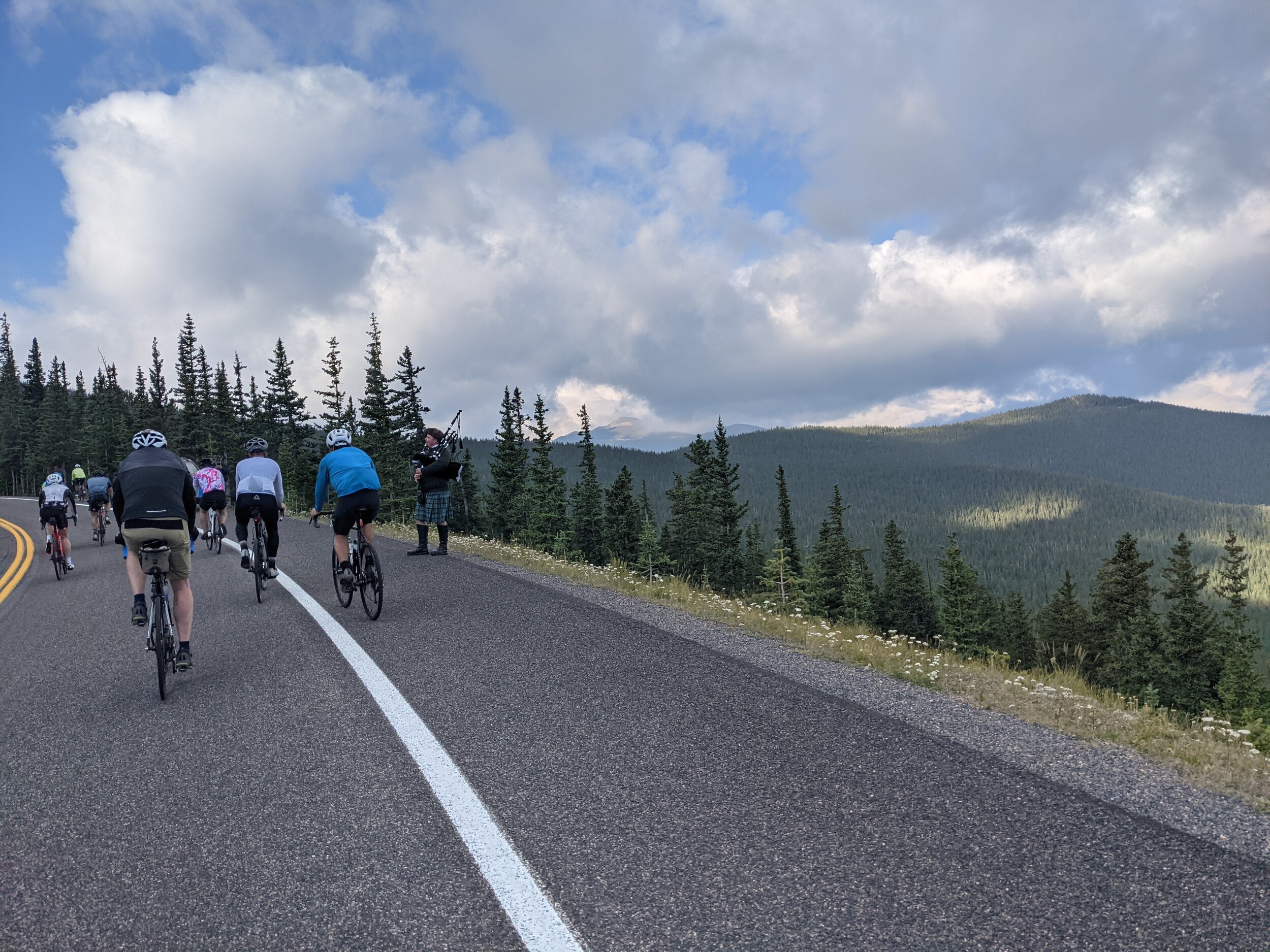
For my nutrition strategy, I was expecting to ride for about 8 hours, thinking I would burn about 300 calories per hour over the day (roughly 2800 calories). Ideally during any endurance event, you can consume about half the calories burnt just due to the nature of consuming calories while moving. I brought nearly 3000 calories of my own which consisted of 8 packets of Honey Stinger gels (Strawberry Smoothie flavored), 6 Gu Stroop Waffles (some with caffeine), and 8 single serving packets of Skratch labs powder to go in my hydration pack. By the end, I consumed 5 of the gel packets, 3 stroop waffles, and 6 powder packets, but I also managed to eat random food at the aid stations such as peanut butter and jelly bites, oreos, and coca cola. Also, I drank over 6L of liquid that day where I only expected to need to drink 4.5L.
Photo Credit: Larry
Sugar Data for the Day (some missing in the beginning unsure why), but I felt my nutrition and hydration strategies worked out well as compared to Mount Evans, so not much to say here aside from that the effort must also correspond to the strategy implemented, and I ate well after the ride was done.
Perfect Weather and Splendid Views off Juniper/Squaw Pass
Photo Credit: Larry
Notably, the Honey Stingers (or maybe just gels in general) ended up causing me extreme gas after 5 or 6 hours of riding, which was very uncomfortable and caused me to stop eating somewhere between miles 35 and 55, just before Loveland Pass. The section before the Loveland Pass aid station was most certainly the hardest of the whole ride. Maybe it was my GI or maybe it was the punchy terrain of mini 18% hills, but that was the only section of the ride where many had to stop and think about why they were riding. Thankfully the aid station is right before going over the top of the pass and I could get my GI issue addressed. By this point in the ride, there isn’t more to really say regarding the ride except to enjoy the views, the experience, and to be safe, the latter being the hardest for me apparently.

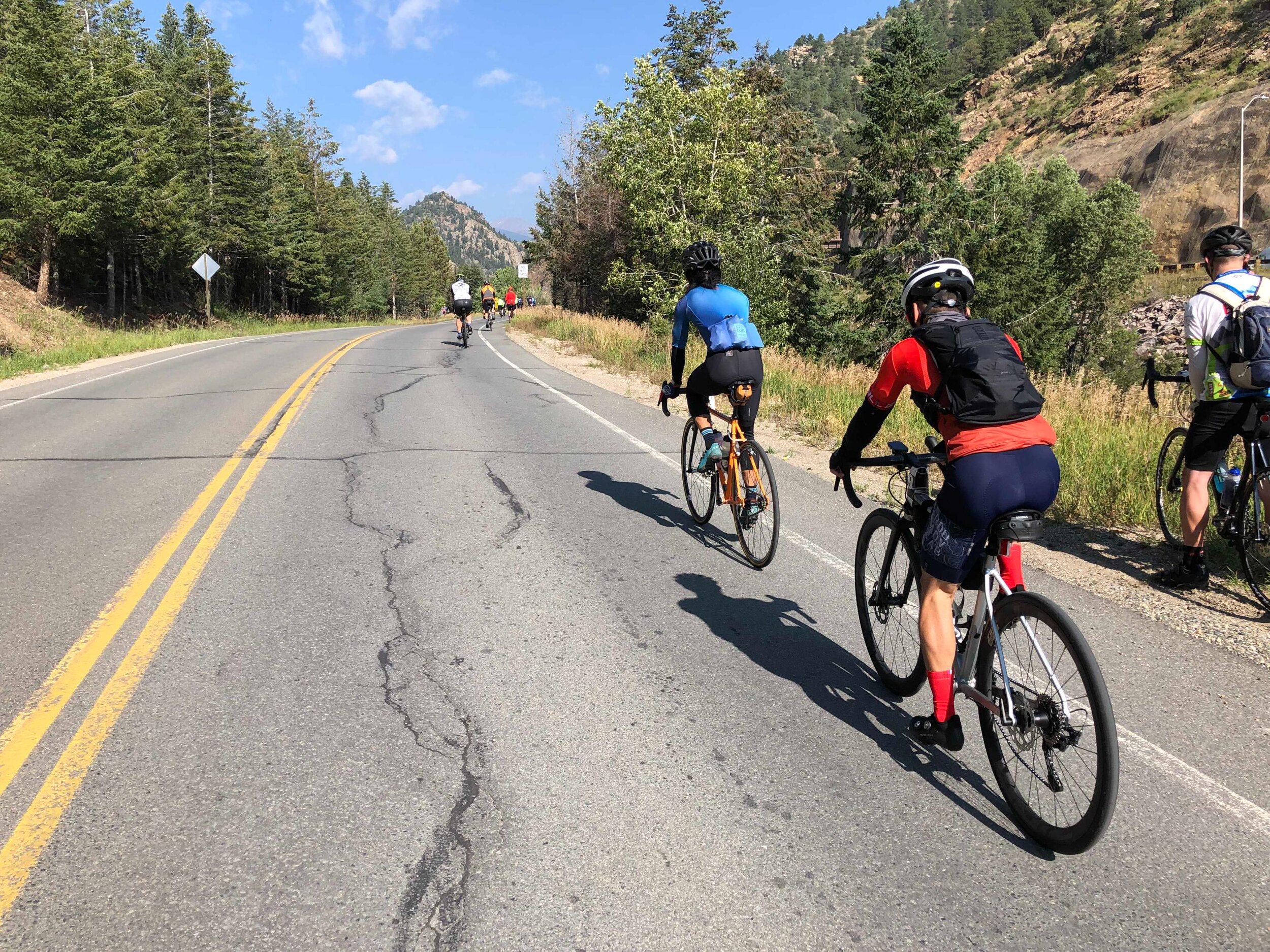
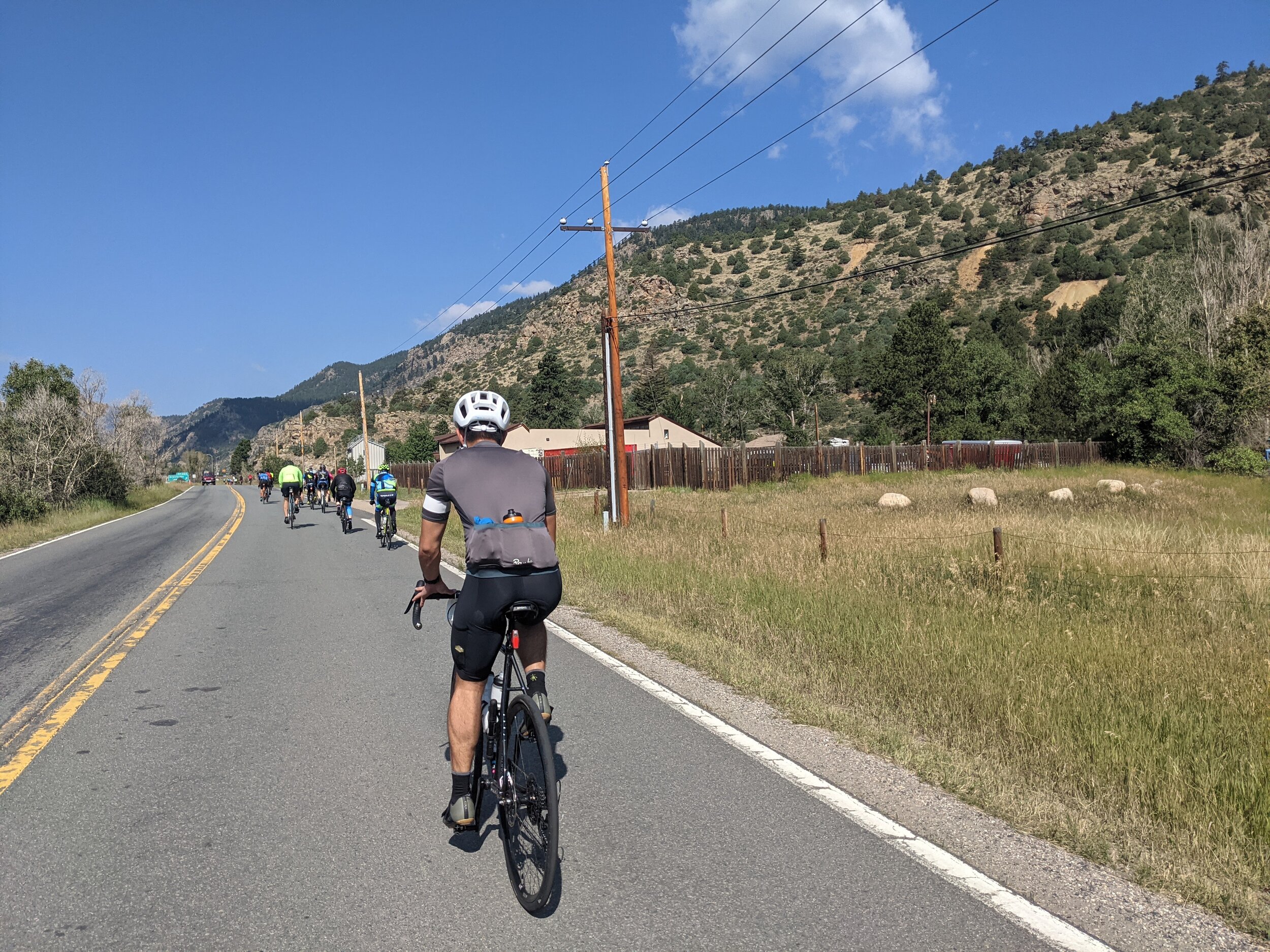
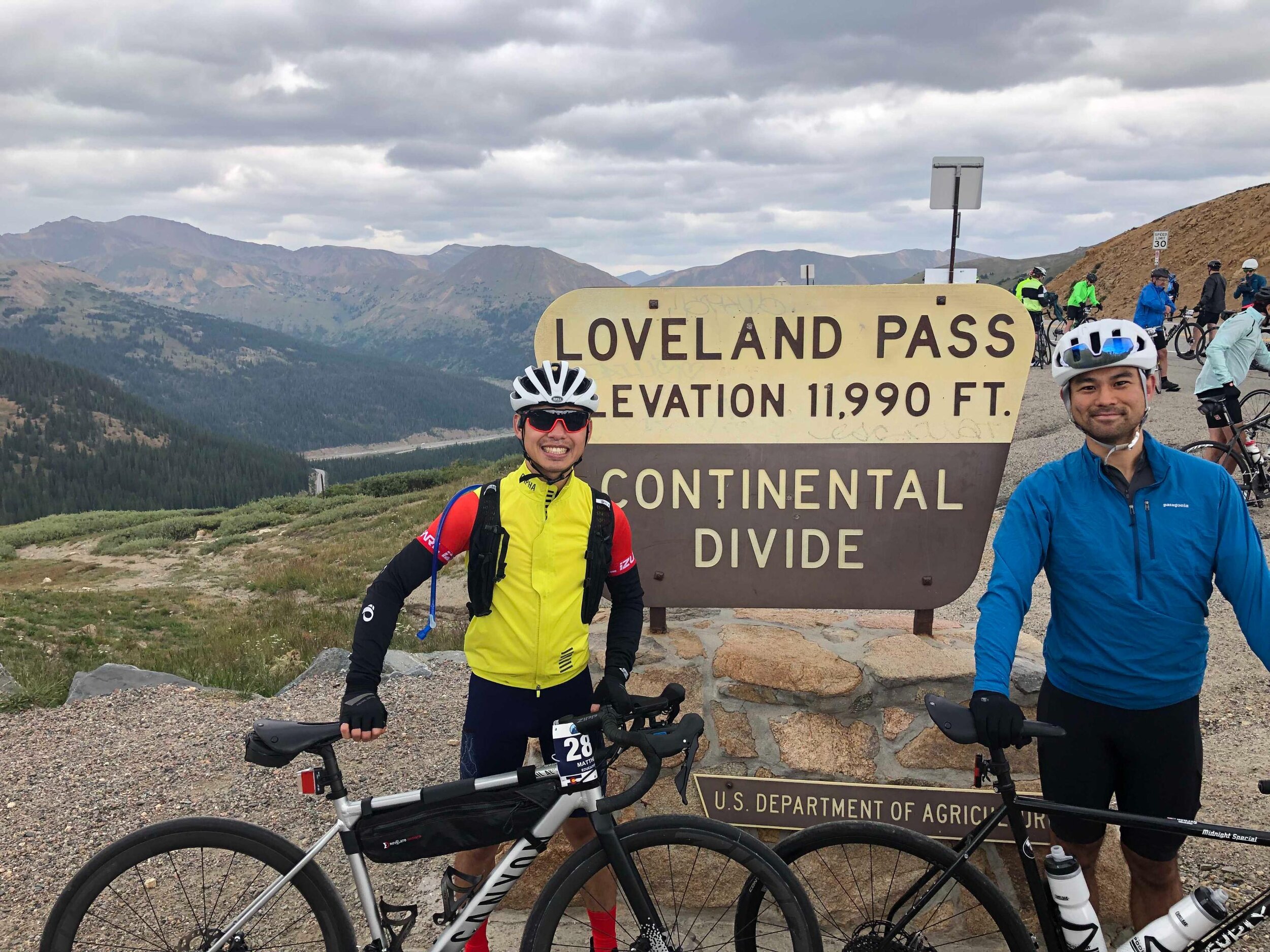
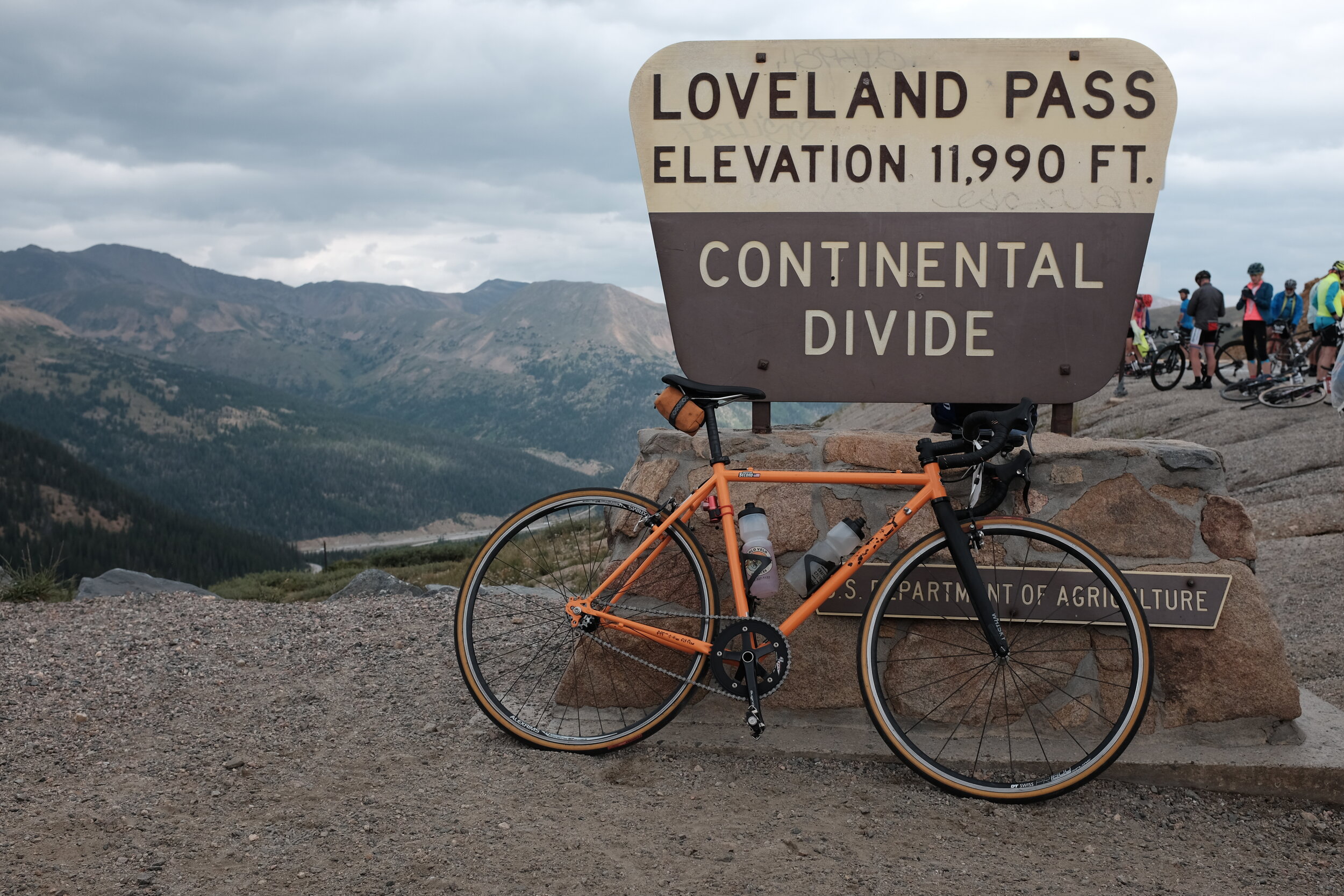
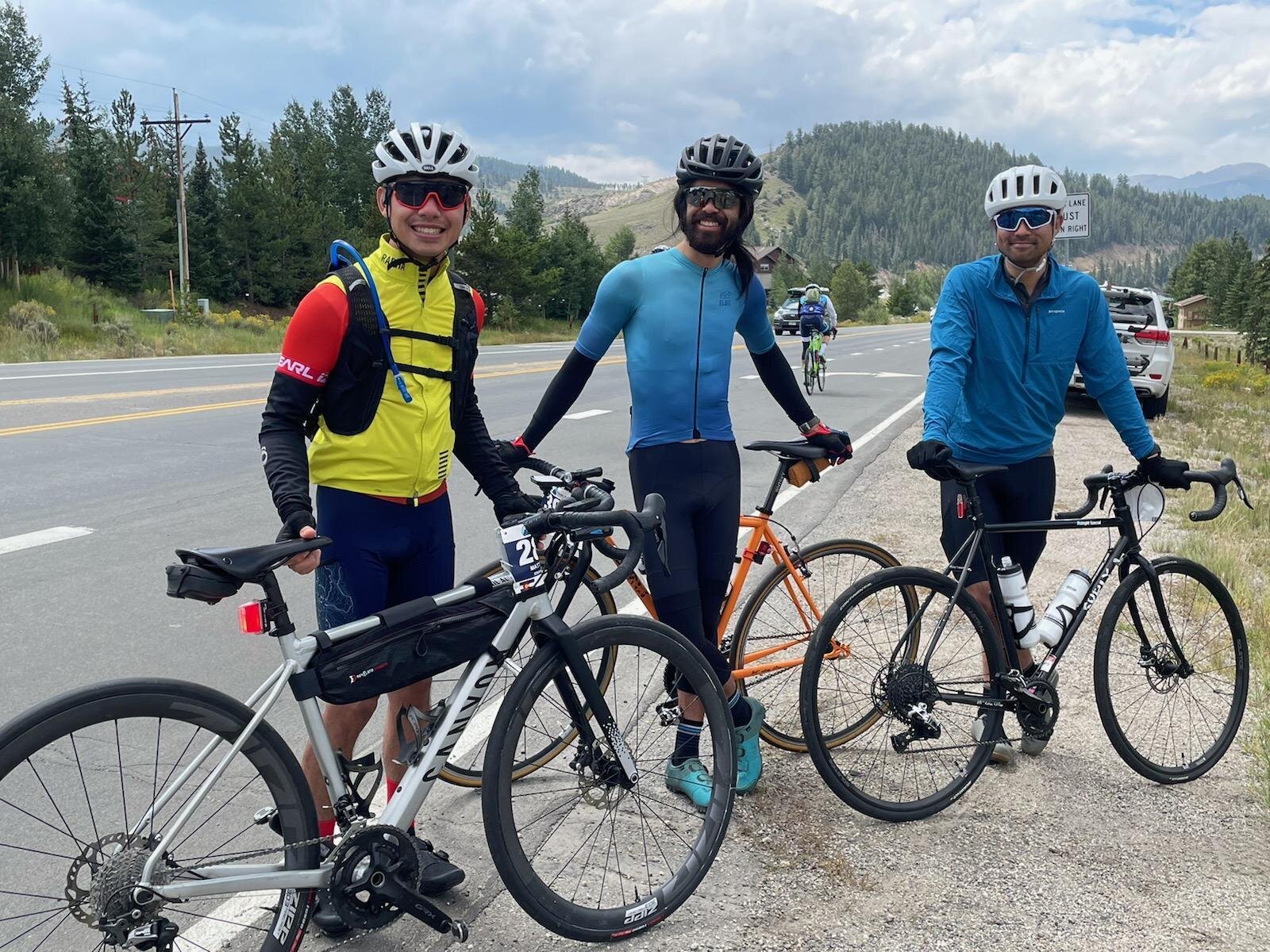
Unfortunately, I crashed on the descent off Swan Mountain. I took a corner too fast, slammed the brakes, skidded both tires and somehow tumbled 5 or 6 times sideways to avoid going over a guard rail. Larry was thankfully not too far behind and saw the whole thing. I managed to get up right away, alive obviously, but surprisingly mostly unhurt. I had minimal damage to my helmet and seemed to take the fall almost entirely on my elbow and hips. Torn up with lots of road rash, I was unsure if I should continue. The bike was in riding shape aside from the handlebar tape being torn up, and I felt extremely stupid for being so careless. Later I would see another fellow rider in a stretcher on the descent of Vail Pass too who was less fortunate, I hope they are doing better. Making it to the aid station at Frisco, I would decide to carry on to finish the ride as the medic there cleared me.
I was lucky. Cycling is dangerous and it should never be underestimated. I managed to ride away from this one. Big thanks to the rider behind me that stopped with Larry and had a first aid kit with the appropriate bandages and the medics who cleaned me up and wished me well on my way.
Atop Vail Pass (Final third)
Finish Line
Photo Credit: Debra
My final thoughts on this particular ride are that with the goal of completing the ride, the event is largely an exercise in mental resilience such that the temptation to stop and call it quits is an option since completing even 1 of these passes in itself is a huge lifetime achievement. With the appropriate training (and maybe even without), the distance is long, and there is a lot of climbing at altitude for sure, but Team Evergreen puts on a great event that can be enjoyed by everyone. This event can give anyone a glimpse into what many any single stage of a multi-stage ride consists of in the world tour. For most including me, I think shorter events such as the Mount Evans HC are definitely harder both mentally and physically due to their overall shorter duration, which is definitely counterintuitive. Big thanks to Debra, Rachel, Alisa, Kathy, Kathryn and others who were critically important support outside of just the aid stations for rides, food, and moral support. And I mean, Lenny rode the whole thing on a Fixed Single Speed bike (48x18)! C’mon! What’s up with that!? Until the next adventure, ride on!
